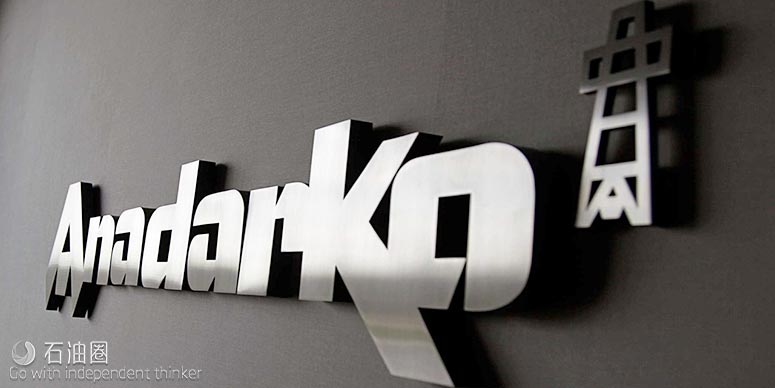As artificial intelligence and the Big Data that powers it dominates the agenda of Silicon Valley’s heavyweights, some oil and gas players are looking at how such technologies can lead to further improvements in the oil patch.
It’s something that Anadarko Petroleum CEO Al Walker thinks about, particularly its ability to lower breakevens, reduce exploration risk and advance seismic interpretation.
“Someone is going to find a way to take seismic data and make it predictive of hydrocarbon phasing so the exploration risk we all face today will go down,” Walker said during the recent Landmark Innovation Forum & Expo (LIFE) in Houston. “At the same time we find ways to make what we do more efficient so that our breakevens are low … producing good returns and good cash flow even when pulled around by volatility we can’t control.”
Seeking a culture change while moving to embrace digital technologies such as artificial intelligence (AI), the ability of machines to imitate the behavior of humans, Anadarko formed an advanced analytics and emerging technologies group in October 2016. The group came roughly a year after the E&P added a techie to its board—Primer’s Sean Gourley— to help the company harness and grow its technical skills. Gorley, the CEO of the software development company that specializes in designing artificial intelligence applications, joined Walker on stage at LIFE.
They addressed technology, challenges, strategy and fear as the industry, once known for its slow uptake of technology, writes a new chapter.
Seeking Strategy
While the downturn has led the oil and gas industry to technology to improve efficiency and lower costs, Gourley pointed out that the industry still has much work to do. He mentioned a survey conducted by MIT Sloan Management Review and Deloitte that gave the industry of 4.6 out of 10 in the area of technology.
“I think the judgement was [the industry] has data, has initiatives, [but] no strategy,” Gourley said. Compared to the likes of Google, which is betting itself on AI, the oil and gas industry is in a different space, he added, but the data is there. “The large oil and gas companies are producing 1.5 petabytes of information on average every day. There are huge amounts of information.”
However, only about 1% of it is being used, Gourley said. Engineers spend most of their time looking for data needed, extracting it and cleaning or modifying it for use, instead of analyzing it. But having a strategy is key when aiming to make data obtained useable and accessible, he later added.
Seismic Possibilities
BP showed the world what supercomputing technology is capable of unveiling when the company used advanced seismic technology and supercomputing power to identify more than 200 million barrels of additional resources at the Atlantis Field in the U.S. Gulf of Mexico. It later identified more resources at other fields.
A technology called full waveform inversion along with work by a Houston-based engineering team on an algorithm, which speeds the time it takes to process and analyze data, made it possible. The technique involves matching seismic simulations with existing seismic data to produce subsurface images that are of better quality.
Deep learning, an algorithm-driven form of machine learning in which each layer of a deep neural network learns from the one before it, can play a role in identifying fault transitions. Gourley spoke of how deep learning was used to program computers to win games against humans and how such technology is also being used in oncology to detect and identify tumors. “I think we’ll see the same kind of rapid evolution of sort in a lot of different sectors,” he said.
Addressing Fears
So what does this mean for humans? Walker recalled concerns raised by geophysicists when the company began thinking about ways to use AI for seismic interpretation. Geophysicists questioned whether they would “become the next Model T,” being put out of business, Walker said. He responded by comparing the situation to radiologists, saying there are just as many today as there were 20 years ago. “Human interaction with a machine improves diagnostics,” he said.
However, they might not have been the best example, considering Gourley said radiology is not one of the most popular areas to go into today given the recognition that there may not be a job for someone entering medical training today. Algorithms have been getting quicker and better at recognizing patterns and helping improve diagnoses.
“For anyone entering geophysics today, “you should probably be very good at interacting with AI if you still want a job,” Gourley said. “It’s going to be a combination of humans and machines coming together” that leads to improved accuracy and technology advances.
Some tasks will become automated, but the more difficult ones will require a combination of both humans and machines, he added. Skills such as scientific computer programming language are a must.
Attracting Talent
Anadarko was perhaps lucky when its search to fill advanced analytics and emerging technologies positions attracted hundreds, given the lures of Google, Facebook, Amazon and other tech giants seeking similar talent. But the oil and gas industry as a whole still faces challenges in attracting such talent.
Companies must give “technology a place at the table,” while also giving employees space to build and pushing them to become better and stay at the top of their game, Gourley said. “A lot of things have to change in oil and gas to do that,” he added, turning to everything from changing the way office spaces are designed to embracing quirkiness.
Walker said that the industry “certainly understands that if we don’t apply technology differently we’re going to find ourselves in a spot we don’t want to be.”
He later added that “If we’re not using machine learning to improve, think and progress the way a toddler would progress through life, we’re going to get left.”

 石油圈
石油圈
